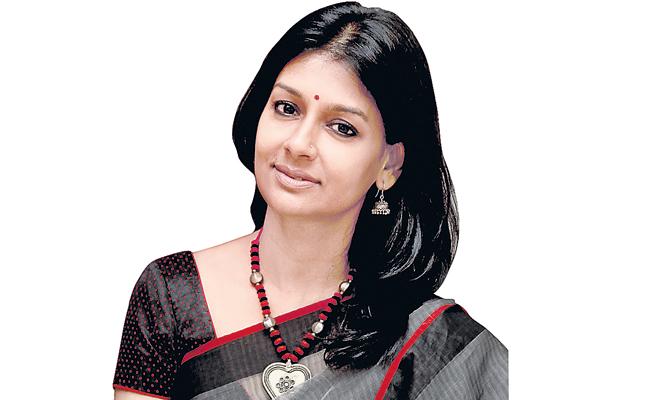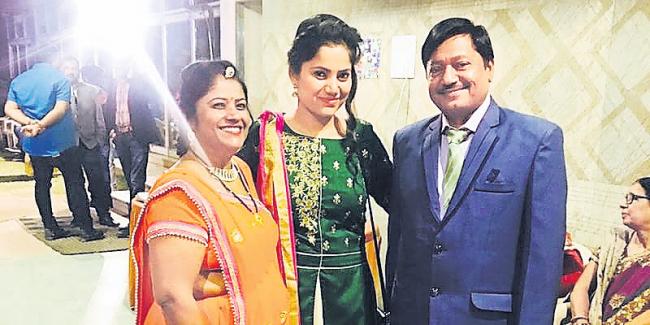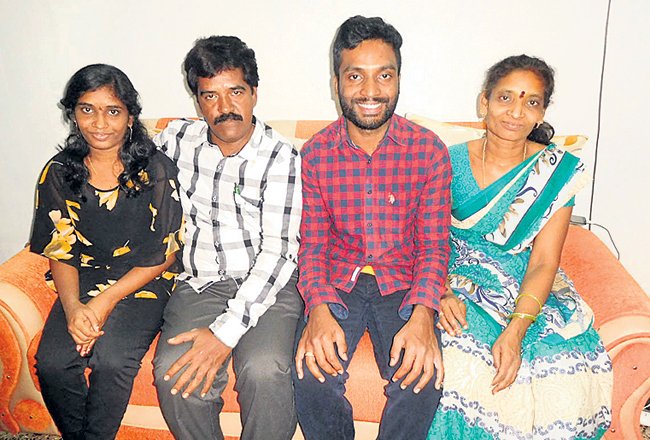Royalty always intrigued me: Tamannaah Bhatia
Actress Tamannaah Bhatia, who will be seen as a South Indian royal in a campaign, says royalty is something that always intrigued her.
The actress has been roped for a South Indian textile brand, Pothys. For its campaign shoot, she will be essaying a South Indian royal.
Drawing inspiration from the founder of Bengaluru, Kempe Gowda’s lineage, fashion designer Nishka Lulla has put together Tamannaah’s look.
“The only time I was essayed aristocracy in the creative format was in ‘Baahubali’. This time around it’s for a commercial ad shoot and I’m very impressed with the way Nishka has curated my entire ensemble,” Tamannaah said in a statement.
“Royalty is something that always intrigued me to a great extent. I’ve always wanted to be part of a period drama and playing gentry is such a mastered form of the fine arts,” she added.
Lulla took two months to design the entire look.
“I did a lot of research on South Indian royalty and the whole look is inspired by royalty. I have draped two silk saris together in red and peach and emerald green and hot pink and have used a lot of heavy gold jewellery,” said the designer.
Akshay Kumar is busy being a perfect dad soaking in the sight of his baby Nitara playing on the beach
Akshay Kumar is currently gearing up for the release of his upcoming film Padman which shows him as the Superman we didn’t ask for but need.
Two weeks before the release, Akshay along with his kids and wife Twinkle Khanna has taken off to Goa to enjoy some quality time with them.
Twinkle shared a click of Akshay wherein he is busy staring at his daughter Nitara as she is busy playing on the beach.
Twinkle captioned the image, “Trapping golden sunlight within the pores of your skin, hair salty from the hazy blue sea, the blazing red of the Recheado mackerel going down the throat- the colours and flavours of my beloved Goa.”
loving pics of Puneesh and Bandagi prove that they’re mad for each other
Bigg Boss 11 challengers and love birds, Puneesh Sharma and Bandgi Kalra, turned out to be a popular name after their spell in the most popular reality show. The two lovers get shot with each other from the beginning and their cute images showcase that they still in love and going tough as a cute pair.
The awe-inspiring pair is making up for lost time and is seen enjoying each other’s company.
As it already known to the majority of people, Bandgi had to say goodbye to Bigg Boss 11 before than beau Puneesh who become one of the last four contenders.
In recent times, Puneesh Sharma and Bandgi Kalra turned headlines when they were seen enjoying the party in the national capital.
Puneesh Sharma is the resident of Delhi whilst his love Bandgi is the resident of Mumbai.
For the two lovers, the distance is not much of a concern who earned celebrity rank with Bigg Boss 11.
Puneesh Sharma and Bandgi Kalra had thrown caution to the wind by upholding with their so-called love relationship within the Bigg Boss house.
A Trip To The Dense Caves Of History
Tamil Nadu hosts innumerable magnificent marvels. From natural beauty to man-made surprises, the state has everything in its pocket. Set your feet on this land dotted with heritage cities and perennial beauties and be awe-inspired. Mahabalipuram is one amongst these priceless wonders in today’s era. Also known as Mamallapuram, Mahabalipuram is a beachside town located in the Kanchipuram district of Tamil Nadu. The history of this town dates back to 7th century during the reign of Pallavas. Today, it has become one of the major historical towns in India with its name on the list of the top UNESCO World Heritage Sites. Famous for its temples in the form of chariots, rock-cut sculptures and ancient temples, Mahabalipuram is assuredly a historical gem. How about planning a trip to this prestigious town and exploring the dense caves of its history?
As Mahabalipuram experiences tropical climate, the temperature and humid conditions are not favourable during the summer season. Therefore, it is advisable to not visit Mahabalipuram from April to September. The ideal time to visit Mahabalipuram is from November until the end of February on account of its optimum climatic conditions, which will let you roam around freely and comfortably.
As Mahabalipuram experiences tropical climate, the temperature and humid conditions are not favourable during the summer season. Therefore, it is advisable to not visit Mahabalipuram from April to September. The ideal time to visit Mahabalipuram is from November until the end of February on account of its optimum climatic conditions, which will let you roam around freely and comfortably.
A Miraculous Delight Of Kangra Valley!
Nestled in the lap of Shivalik Range of Kangra Valley, the temple of Jwala Devi is believed to be the first-ever temple built by the Pandavas. Jwala means light. Over ages, people have faith that the temple is one of the most auspicious temples of the many temples dedicated to Goddess Jwala. The goddess resides in the flame that keeps burning continuously.
It is one of the 51 Shakti Peeths found in different corners of Southeast Asia. The platform of the temple is set with a small dome and a square pit in the centre, where the sacred stone is found. Goddess Jwala Ji, who resides here, is also known as the deity of the Flaming Mouth; the pit where the flame burns is believed to be the mouth of Mahakali.
Out of the 51 Shakti Peeths, the legend of the Jwalamukhi Temple relates to Sati. She was born when gods concentrated their individual energies on the ground. They did this in order to get respite from the atrocities they were facing from the demons. This Adi Shakti girl was brought up in the house of Prajapati Daksha.
When Sati felt humiliated by her father for not inviting Lord Shiva at a yajna, she sacrificed herself in the fire of havan kund. Lord Shiva got so agitated that he carried Sati’s burnt body and moved around the world. The gods approached Lord Vishnu to diffuse Lord Shiva’s anger in order to save the world from a calamity. He then used his Sudarshan Chakra, which cut Sati’s body into 51 pieces. Wherever her body pieces fell, it is believed to be the power centre of the goddess – a Shakti Peeth. Amongst all parts, it is believed that the tongue of the goddess fell in Kangra Valley.
The well-renowned Mughal Emperor Akbar had also visited the temple in response to the miraculous flame of Jwala Ji. The government of India with a team of reputed geologists tried analysing the source behind this eternal flame. It all went for a toss. The gods have their own ways to shimmer with the ultimate power that they possess.
The picturesque temple, built in the Indo-Sikh style, is a modern building whose dome is of gilt, gold and pinnacles and possesses a beautiful folding door of silver plates, presented by the Sikh Raja Kharak Singh. Do not miss the Shaiyan Arti of this wondrous shrine.
Visit this timeless beauty during the month of Navratri. The colours here will mesmerise you with their charismatic aura. Binding ourselves to religion and spiritualism is way beyond the scientific reasons that surround us.
The entire year is the best season to pay a visit to this forever-lit Jwala Devi Temple. Summers are mild and light. Winters can get extremely cold. Carry heavy woolens to protect yourself from extreme temperatures.
The Temple Town Of South India
Thiruvannamalai is an ancient town placed in the foothills of Annamalaiyar range that is around 195 kilometres away from Chennai. The British regime often referred to it as Trinomalee or Trinomali.
The town is one of the famous religious pilgrimage sites featuring several temples and ashrams including the sacred shrine of Lord Arunachaleswara and ashrams of Seshadrinatha Swamigal, Yogi Ramsuratkumar and Ramana Maharshi. It takes approximately 4-6 hours to reach Thiruvannamalai from Chennai.
The winter season between October to March is the best time to explore Thiruvannamalai.
Thiruvannamalai is not accessible via a flight from Chennai. But, frequent trains and buses are running to and fro Thiruvannamalai. The Thiruvannamalai railway station is well connected to major cities in South India. The best way to uncover the hidden jewels of Thiruvannamalai is by road as it is easily accessible via the Puducherry-Krishnagiri Highway.
There are two-wheelers and bicycles available for rent for commuting within Thiruvannamalai. Alternatively, there are autorickshaws and buses that help travellers commute within the region.
The metropolitan capital city of the state Tamil Nadu is placed on the southeast coast of India and offers the best experiences of both sea and land with its heritage temples, churches and gorgeous beaches. Chennai is also an excellent place to savour delightful delicacies and shop for both cosmopolitan and traditional items.
Chengalpattu is 62.5 kilometres away from Chennai and roughly takes 2 hours to complete the journey. Blessed with incredible natural beauty like lakeside vistas and historic temples, Chengalpattu is placed in the Kanchipuram district of Tamil Nadu state. This little town is a great transit stop to popular destinations like the Vedanthangal Bird Sanctuary and Mamallapuram.
The city has a rich history of mighty empires including the French colonisers that resided in the area and fought many epic battles. The iconic Kolavai Lake, the Madras Crocodile Bank and the Vallam Reserve Forest are amongst the notable attractions in the small little town.
The remaining 132.5 kilometres can be covered in 2 hours and 30 minutes. Thiruvannamalai has a wide array of temples and historic sites that catch the attention of several travellers. One of the reasons why people refer to it as the Temple Town of South India.
New ropeway from Mumbai will take you to Elephanta Caves in just 15 minutes now
erybody who lives in Mumbai or has ever visited the city of Bollywood, is aware of Elephanta Caves. They are the beautiful caves with some gorgeous rock art dedicated to Shiva, and are located on an island about 10 kilometers away from Mumbai.
As of now, anybody who wants to travel to this historical wonder has only one option and that is to take a ferry ride from gateway of India to the caves. It takes almost an hour to reach from Mumbai by sea.
And while the ferry ride is a great experience in itself, it is always a good idea to have another travel option ready, especially if that option helps you save a monumental amount of time.
The central government has sanctioned a project to make a 8-km long ropeway connecting Mumbai to Elephanta Caves. And the best part you ask? It’ll take just 14 minutes to reach from Mumbai to Elephanta once this ropeway gets completed.
The estimated date of completion of the project is in 2022, that is four years from now. This ropeway will be constructed over the Arabian Sea, thus making it the first over-the-ocean ropeway of the country. Exciting, right?
The project has been taken up by the Mumbai Port Trust, and once it gets completed, a total of 30 cable cars will run on the route.
Overtourism: When places are ‘loved to death
Cheap tickets, budget stays and overhyped tourist spots are creating an unsustainable ecosystem that has both residents and governments worried about the future
If you have spent your vacation ticking off an invisible checklist — shooting (on camera of course) the Big Five game animals in South Africa, relishing crepes with strawberry preserve in the shadow of Paris’ Eiffel Tower, or posing at the Blue Mosque in Istanbul — you are among those who have contributed to ‘overtourism’.
The phrase, that has gained currency in recent weeks after the release of a documentary titled Crowded Out: The Story of Overtourism by online travel agency Responsible Travel (RT), refers to popular destinations being overrun by tourists in an unsustainable way.
As the documentary, presented by founder of RT Justin Francis, proves, overtourism is disrupting not just fragile cultural and ethnic landscapes, but also creating an uncertain future where neither the tour operator nor the traveller is in charge.
The problem is not confined to the big name holiday destinations alone. There are innumerable smaller towns and cities that are losing the fight against a globalised travel experience that reduces local communities to click-worthy vignettes.
As one Venice resident in Crowded Out, rues, “They think we are animals.”
Machu Picchu, Peru | Photo Credit: Getty Images
In the recent past, protests and government action against mass tourism have been reported in places such as Amsterdam (The Netherlands), Venice (Italy), Machu Picchu (Peru) and Dubrovnik (Croatia). Residents of cities like Barcelona and Mallorca in Spain and Skye in Scotland have openly complained against the influx of visitors during summer, and even held public protests at popular tourist sites.
Taking things a step further, the local government of Barcelona has prohibited the construction of new hotels in the city centre, and also started fining tourists who walk around in their bathing suits outside the beaches.
Drubvonik, a magnet for worshipful fans of the TV series Game of Thrones, set a limit of 8,000 visitors per day in 2017, and chances are that this number will be halved over the years.
In India, as of this year, visitors to the Taj Mahal in Agra can spend only three hours per person, to curb overcrowding at the UN World Heritage site.
Pastime or industry?
Tourist journeys around the globe rose from 25 million in 1950 to 1.3 billion in 2017, according to figures mentioned in the RT film, and this is set to increase to 1.7 billion by 2030.
A banner in Barcelona, Spain | Photo Credit: SpecialArrangement
“Everybody thinks that tourism is a pastime, not an industry,” says former New York Times journalist and author Elizabeth Becker, one of the experts interviewed in the documentary.
She also notes mainstream media’s under-reporting of the way the tourism industry has been taking advantage of a world where norms are being redrawn everyday, whether it is in relation to borders between countries, economic systems or new technology.
How does overtourism affect a country like India, where the travel and hospitality sector is an important source of revenue?
For us, the Taj Mahal remains the country’s top revenue generator, with the Government earning ₹56.83 crores out of ticket sales alone (source: Archaeological Survey of India). Poor maintenance and discolouration have not stopped lakhs of people from visiting the world-famous marble mausoleum.
The popping up of hotels and resorts in hitherto pristine forest areas and tribal settlements is one of the most visible signs of tourist overload.
- Try and avoid these pitfalls of irresponsible tourism:
- Canned hunting – When animals such as lions are reared specifically for the purpose of being hunted on private game reserves; don’t patronise these resorts that encourage their volunteers to interact with wildlife.
- Captive animals – Safari rides to see tigers or elephants ‘in the wild’, are a major tourist attraction in many countries, but the practice is often a cause of stress in wild animals and also affects their natural behaviour. Bears, monkeys and snakes that are made to ‘perform’ in public are also a no-no.
- Cultural insensitivity – Learn to respect the private space of the people you see in their natural surroundings. Wearing the wrong type of clothes or creating a public nuisance through binge-drinking or noisy behaviour is the quickest way to make yourself unwelcome in a foreign country.
- Irresponsible hiking and biking – Though these activities are closely linked to Nature conservation, skipping off into virgin forests without thinking about the environmental impact of your own presence is dangerous. Make sure you don’t end up spoiling the very resource you set out to admire in the first place.
- Information courtesy: www.responsibletourism.com
Hill stations like Yercaud and Kodaikanal are slowly getting carved up by real estate companies, eager to benefit from the travel trade.
“We have to see the world in a very natural way. Being a traveller is different from being a tourist,” says Kavitha Reddy, co-founder of Bengaluru-based Basecamp Adventures, a Ministry of Tourism-certified agency that specialises in mountaineering holidays. “Excessive commercialisation and infrastructure is bad news for any destination,” she says, citing examples of the large groups of campers at Mount Everest Base Camp, the laying of the road up to Kodachadri Hill and a cable car up to Nandi Hills. “To decongest visitor volumes, we have to create season-specific destinations and restrict numbers.”
Me Too attitude
Among the causative factors of overtourism are travel journalism and the creation of ‘honeypot destinations’ that everyone ends up flocking to during a certain period of the year.
“Don’t travel to impress your friends,” advises Tanya Oberoi of UnTravel, a bespoke tour operator based out of Gurugram. “The race to see the exotic and do the offbeat needs to be self-moderated. The Government must keep a tab on the number of tourists a place receives and if it feels that it is leading to destruction of the environment and the culture of the place, requisite steps need to be taken to reverse the effect. An exotic place will never remain so if it is over-burdened with tourism.”
At Mumbai-based The Backpacker Company, which offers backpacker tours to Europe, Japan and Israel, founders Yogesh M Shah and his wife Suchna stress on respect for the environment. “We make sure there is no littering on the streets or any other kind of damage to the environment on all our trips,” they say. “Every country has a different culture and its own rules and regulations. It is absolutely mandatory to adhere to them and respect the culture, however surprising or different it may be for us.”
Lure of the mountains
Sip salty tea as you explore a landscape dotted with majestic peaks, valleys, monasteries and remnants of a conflict. Notes from a journey to rediscover a forgotten paradise
Perhaps it is because I grew up in Kashmir surrounded by mountains, that I am always enticed by them. I visited Ladakh for the first time three decades ago with a few friends. We flew to Leh from Srinagar and travelled by road on our way back, stopping halfway at Kargil for a night.
I visited Ladakh once again with friends in a car. We left Srinagar for Zanskar in the morning.
The first mountain pass on the Srinagar-Leh highway was the infamous Zoji La. I found the road as rough now as it was when I travelled along it 30 years ago. A new and wider road has been built which is used by Army trucks with 20 wheels that carry heavy artillery to Kargil. A tunnel is currently being dug under the Zoji La and it will take some years to complete. On the other side of the pass, is a bend in the road called Captain’s Turn named after an engineer who fell to his death during the construction of the road in the 1950s. We stopped at a roadside stall in Drass for a cup of salty Kashmiri tea. Drass is the gateway to Ladakh and considered one of the coldest inhabited places on the planet during winter.
We came across a high wall on one side of the road while driving towards Kargil. It was built to protect a convoy of military vehicles from shelling by the Pakistani army.
We stayed out-of-town in a hotel located on the banks of River Suru, an ideal location to explore Suru Valley. We watched the mountains from our balcony and how they continually change colour in the evening.
The next morning, we left for Rangdum. The first section of the road was surfaced and offered resplendent views of the Suru Valley, with green fields enclosed by poplars, willows and apricot trees. I was eager to catch sight of the Nun and Kun peaks on our way to Rangdum, the highest peaks in Kashmir on this side of the LoC. The second highest peak in the world, K2, lies on the other side. It was named by a British surveyor who labelled it when he sketched two Karakoram peaks from Harmukh, identifying them in his notes by the symbols K1 and K2. I saw the Harmukh peak in my youth and it cast a spell on me that has stayed.
A few miles before reaching Rangdum we passed a camping site with a few tents pitched on the green grass by an aquamarine stream. As we approached a monastery built on top of a hill in a wide valley, the sunlight at dusk turned the mountains behind the monastery into a colour palette of beige and brown. When I stood at the monastery I found that the sun had set aflame the trough formed by the slopes of two mountains. I tried capturing it on my phone camera but it was too grand a spectacle for a small device to do justice to it.
The mountainous landscape of shattered rocks in Zanskar was spectacular, more so because it was so peaceful. And peace is always beautiful.
No Results Found
The page you requested could not be found. Try refining your search, or use the navigation above to locate the post.
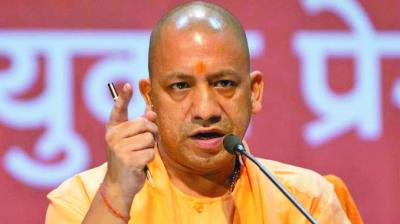
Muslim League is virus, Congress infested with it: Yogi Adityanath
Uttar Pradesh Chief Minister and BJP leader Yogi Adityanath said on Friday that Muslim League is like a "deadly virus" and the Congress party is infested with it. He further said that if Congress and the Muslim League win the election then the virus would spread...
read more
‘BJP brought peace, development in region,’ says Amit Shah in Arunachal
Addressing an election rally in Arunachal on Friday, BJP president Amit Shah said PM Modi had instructed ministers to visit northeast every fortnight to resolve problems in the region. Praising the BJP government, Shah said, “Five years ago, northeast was disturbed...
read more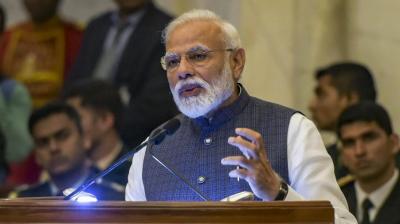
PM Narendra Modi remained up all night after monitoring Balakot strike
Prime Minister Narendra Modi remained awake till the early hours the night the Indian Air Force carried out the Balakote strikes to avenge the murder of more than 40 jawans in Pulwama terror attack. The Prime Minister told ABP News that he stayed awake on the early...
read more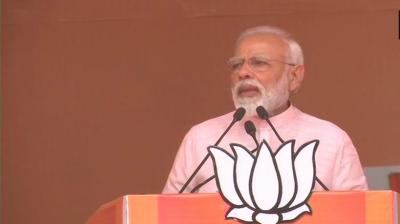
Your chowkidar will go after terrorists, even in hell: Modi tells UP poll crowd
Addressing an election rally in Uttar Pradesh’s Amroha on Friday, Prime Minister Narendra Modi said he would like to thank the Government of UAE and people of UAE for honouring him with the Zayed medal. “This is not an award given to him but to the Indian people,”...
read more
Sonu Nigam lends voice to PM Narendra Modi’s poem
Singer Sonu Nigam has recorded a new song penned by Prime Minister Narendra Modi for the upcoming web series "Modi: Journey Of A Common Man". According to a press release, Nigam has sung the verse 'Shyam Ke Rogan Rele' composed by music composer duo Salim-Sulaiman,...
read more
Kylie Jenner didn’t put Jordyn Wood’s cosmetics on sale
Kylie Jenner has spoken up on the sale of former best friend Jordyn Wood’s lipstick range, which is sold by Kylie's company. Shortly after news broke that Jordyn had allegedly hooked up with Khloe Kardashian’s (Kylie’s elder sister) then-boyfriend Tristan Thompson,...
read more
Here’s why Justin Bieber slammed by netizens!
Justin Bieber is being trolled for posting a throwback photo of Sean “Diddy” Combs and the late Kim Porter to promote his new clothing line, Drew House. According to reports on People.com, Diddy shared a throwback photo of himself and Porter, recounting a fond memory...
read more
Amitabh Bachchan gets emotional
Amitabh Bachchan takes out time almost every Sunday from his busy schedule for his fans that gather to catch a glimpse of him. He has been following this tradition of waving out to his fans for many years now. The veteran actor, who is one of the most active...
read more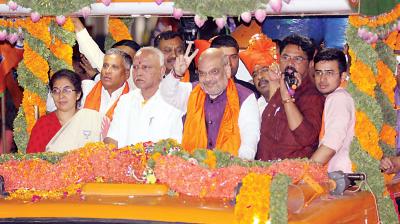
Amit Shah kills the dissent in Bangalore South
The discord in Bangalore South constituency over the denial of the party ticket to Tejaswini Ananth Kumar, appears to have been papered over for now, hours before the arrival of BJP National President Amit Shah in the city for a massive road show with the party...
read more
WhatsApp makes group chats more secure, gives users more control
e-Paper | Sunday Chronicle Auto Refresh | Corporate Insolvency Resolution Process LOK SABHA ELECTIONS 2019: INDIA DECIDES Wednesday, Apr 03, 2019 | Last Update : 04:55 PM IST Elections 2019 Nation World South Entertainment Sports Technology Lifestyle Gallery Business...
read more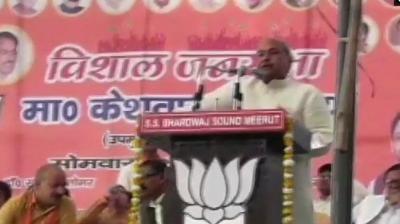
BJP lawmaker makes remark on Priyanka Gandhi
Ahead of Lok Sabha elections, a BJP leader campaigning in Uttar Pradesh’s Meerut is the latest to raise the outrage. In reference to Congress leader Priyanka Gandhi, BJP’s Jayakaran Gupta said “skirt wali bai” in what was interpreted as a reference to Congress leader...
read moreDonald Trump mocks Joe Biden over improper behaviour
US President Donald Trump took a shot on Tuesday at former Vice-President Joe Biden, a possible Democratic rival in the 2020 race for the White House, mocking him over allegations of unwanted physical contact with women. In a speech to a fundraising dinner for the...
read more




